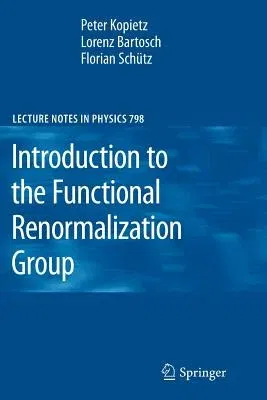Peter Kopietz
(Author)Introduction to the Functional Renormalization Group (2010)Paperback - 2010, 28 June 2012

Qty
1
Turbo
Ships in 2 - 3 days
In Stock
Free Delivery
Cash on Delivery
15 Days
Free Returns
Secure Checkout

Part of Series
Lecture Notes in Physics
Print Length
380 pages
Language
English
Publisher
Springer
Date Published
28 Jun 2012
ISBN-10
3642263259
ISBN-13
9783642263255
Description
Product Details
Book Edition:
2010
Book Format:
Paperback
Country of Origin:
NL
Date Published:
28 June 2012
Dimensions:
23.39 x
15.6 x
2.06 cm
ISBN-10:
3642263259
ISBN-13:
9783642263255
Language:
English
Location:
Berlin, Heidelberg
Pages:
380
Publisher:
Series:
Weight:
548.85 gm